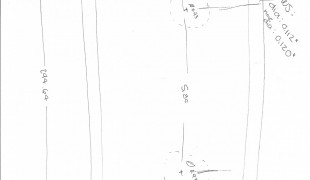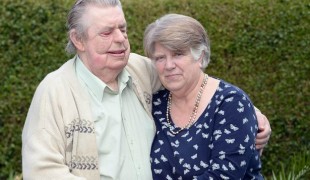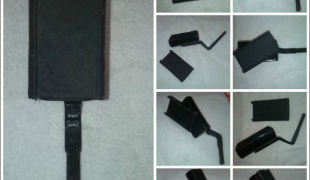- 3548
- 303
- 1
- 3
- 2
- Help Ukraine
About the solution
Aryeh joined the Israel Defense Forces in 2002, as a paratrooper. He suffered a serious injury left him with complex regional pain syndrome, a chronic condition caused by nerve damage to a limb.
During the treatment and healing process, Miri Berger, Aryeh’s wife, wanted to find a way to help one of her professors.
“One of Miri’s professors had lost his dominant arm 20 years prior and was teaching them Maya, a computer-based animation and modelling program where you use your hands on the mouse and keyboard. She saw him going back and forth with his non-dominant arm and everything took a lot longer and was frustrating”, the veteran recalled.
The professor told Miri he hadn’t found a mouse controller oriented to one-armed users, and she was determined to build such a device with Katz’s help. That’s how Crescent was born.
“We put Crescent on his arm, and he called his mother for the first time. At that time, I was working in the innovation lab at NYU, so I had access to a lot of equipment. We built something specifically to help Miri’s professor use his prosthetic limb to move the mouse. We decided to see if the idea could be adapted to work with touchscreens and gestures”, Aryeh explained.
Crescent is a patented innovation that sends commands to any smart device via Bluetooth — tablet, cellphone, laptop, TV – and takes an average of seven minutes to learn how to use. It helps people with upper limb deficiency to be more independent when using technology in their daily lives.
The couple got accepted to an Israeli accelerator and already won an award, and they are launching their own company and getting the gadget on the market.
“We have working prototypes we’re testing. We’re looking at partnerships for a beta pilot and we’re raising capital,” said Aryeh.
Adapted from: http://bit.do/eQt6G
More info: http://www.6degrees.tech
这些解决方案不应包括使用药物,化学品或生物制品(包括食品);创伤性设备;冒犯性的,商业或内在危险的内容。该解决方案未经医学验证。请谨慎进行!如果您有任何疑问,请咨询健康专家。
DISCLAIMER: This story was written by someone who is not the author of the solution, therefore please be advised that, although it was written with the utmost respect for the innovation and the innovator, there can be some incorrect statements. If you find any errors please contact the patient Innovation team via info@patient-innovation.com
-
-
272
-
0
-
4362

Team creates switch operated TV remote for boy with cerebral palsy
Watching movies
Social interaction
Cerebral Palsy
Assistive Technology access
AI algorithm
Trouble with fine motor skills (e.g., writing, buttoning clothes)
Twitching or involuntary movements (myoclonus)
Promoting self-management
Managing Neurological Disorders
Promoting inclusivity and social integration
Neurology
Pediatrics
United States
-
-
-
351
-
0
-
4003

Son helps restore his father’s face using 3D printing
COMMUNICATION: Communicating, whether by speaking, listening, or other means
Social interaction
Cancer
3d Printed
Promoting self-management
Promoting inclusivity and social integration
Recovering from Traumatic Injuries
Improving Speech and Communication
Maxillofacial Surgery
Medical Oncology
Orthopedics
Otorhinolaryngology
Plastic and Reconstructive Surgery
Stomatology
United Kingdom
-
-
-
501
-
0
-
6936

Cell Phone Holder / Tablet / Iphone
Social interaction
COMMUNICATION: Communicating, whether by speaking, listening, or other means
Cerebral Palsy
Assistive Technology access
Strategy/Tip
Assistive Daily Life Device (to help ADL)
Gait abnormalities (e.g., walking difficulties, unsteady gait)
Difficulty coordinating movements
Stiffness or rigidity (difficulty moving)
Paralysis of the legs and lower body
Trouble with fine motor skills (e.g., writing, buttoning clothes)
Twitching or involuntary movements (myoclonus)
Acquired language impairment (Aphasia)
Promoting self-management
Managing Neurological Disorders
Promoting inclusivity and social integration
Raise awareness
Neurology
Portugal
-
 zh
zh
alvinrr • Thu, 05/02/2019 - 10:46